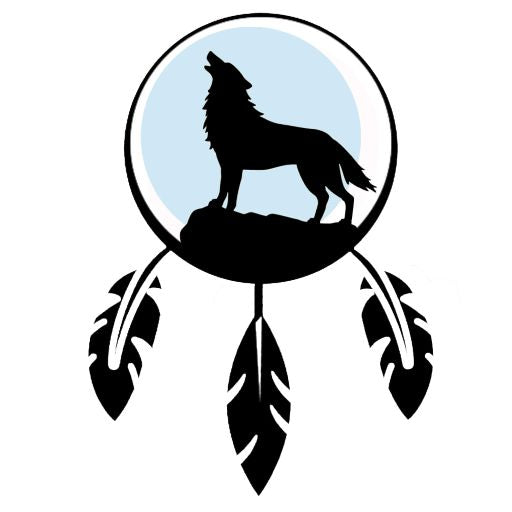Puamun Meshkenu 2024: A week of walking for resilience and reconciliation

The Puamun Meshkenu Community Walk was relaunched in September 2024, embodying a full week of resilience, solidarity, and healing for Indigenous and non-Indigenous peoples. Led by Stanley Vollant, this initiative aims to reconnect communities to their roots while fostering open and honest dialogue among peoples. Here is a look back at the highlights of this momentous week.

Puamun Meshkenu, which means “the path of a thousand dreams” in the Innu language, is an organization founded by Stanley Vollant, the first Indigenous surgeon in Quebec. The idea for the organization stemmed from his desire to contribute to the healing of his community by combining traditional walking, the transmission of Indigenous knowledge, and the importance of resilience in the face of the historical hardships experienced by Indigenous peoples.
The organization's mission is to inspire young Indigenous people and encourage them to dream big, while reconnecting them with their cultural roots. The community walks organized by Puamun Meshkenu are a way to build strong connections between Indigenous and non-Indigenous communities, fostering understanding, respect, and reconciliation. Since its inception, the organization has travelled thousands of kilometres across traditional territories, drawing attention to issues such as mental health, education, and the strengthening of Indigenous identity.

The first day began with a 17-kilometer walk to the community of Kitcisakik. The community warmly welcomed the walkers, and several members joined them for the first few kilometers. A touching moment was shared with the students of Mikizicek School, who listened attentively to the inspiring messages of Dr. Stanley Vollant and helped to convey their dreams through the symbolic walking stick. The day concluded with enriching exchanges in Lac-Simon, accompanied by traditional dances performed by Lolik.
A particularly symbolic moment was the presentation of medicine pouches, made by Dave Verreault-Thisselmagan, to each hiker. These pouches are intended to protect and guide them throughout the many kilometers of walking. The presence of these symbolic objects reinforced the spirit of spiritual connection and protection throughout the expedition.

As the walkers continued their 24-kilometer journey, Dr. Vollant gave a lecture at Amik-Wiche High School in Lac-Simon and participated in a podcast produced by the students. Later, he joined the walkers for the final kilometers of the day, which concluded with a community supper and a short film screening organized by Wapikoni Mobile.

Despite the constant rain, the walkers covered 26 kilometers, accompanied by young people from Lac-Simon. Their courage and energy were a source of motivation for the entire group. Meanwhile, Dr. Vollant gave talks at UQAT and Agnico Eagle Mines, discussing his inspiring journey and his commitment to promoting reconciliation through the Mamu Nikantetau walks.

The day was marked by a gathering at UQAT and a solidarity march through the city of Val-d'Or. Members of the community joined the marchers, contributing to the healing and reconciliation process.

With 27 kilometers to cover, the fifth day was the longest of the entire expedition. Fortunately, the good weather allowed the hikers to rest and enjoy relaxing moments on the beach at the Kinawit site, where kayaks were also available.

Under a beautiful blue sky, the walkers covered 24 kilometers along Route 111. The day was punctuated by moments of sharing around the fire, laughter, and managing blisters after a week of intense walking.

The final day was particularly moving, marking a 22-kilometer walk to the former site of the Saint-Marc-de-Figuery residential school. This place, steeped in the history of residential schools, reminded the walkers of the trauma experienced by Indigenous children and provided a deeply touching moment of remembrance. This moment of connection with history and the walkers' personal emotions was a true step toward collective healing.
Day 8, Monday, September 30 — The end of a long journey on the Anicinape Aki

After a 25 km walk, accompanied by their family, community members from Pikogan, Amos and elsewhere, the walkers reached their goal of walking the nearly 200 km that separate Kitcisakik, Lac Simon and Pikogan.
It was with great pride and several blisters on their feet that the walkers were welcomed by the Anicinapek of the Pikogan community to celebrate their achievement and thank them for the message of hope they carried throughout this long expedition.
A message of openness and reconciliation
Throughout these seven days, Puamun Meshkenu 2024 demonstrated the importance of sharing and listening to strengthen ties between communities. Every step, every conversation, every exchange contributed to building bridges between peoples, honoring both the memory of the past and the hope for a reconciled future. Thanks to the Puamun Meshkenu organization, this annual walking project showed that together, it is possible to forge a path toward healing, respect, and recognition of Indigenous cultures.
About Puamun Meshkenu
Puamun Meshkenu is an organization dedicated to the resilience and empowerment of Indigenous peoples. By creating healing walks, the organization allows participants to experience a sense of connection, reconciliation, and strengthened identity. Dr. Stanley Vollant, as founder, implemented this initiative to encourage young people to pursue their dreams while remaining grounded in their culture and values. The organization goes beyond simply organizing walks; it also works to improve mental health, promote education, and build bridges of solidarity between Indigenous and non-Indigenous people.
Photos: Janie Helen
Sources and references:
1. Puamun Meshkenu 's Official Facebook Page
2. Testimonies from walkers and local participants
3. Official presentation of the Puamun Meshkenu organization
